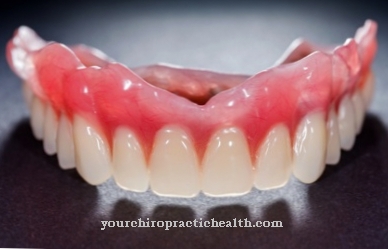As Clinical thermometer is called a special instrument for determining body temperature. It is used to determine a fever.
What is the clinical thermometer?

The human body temperature can be determined with the help of a clinical thermometer. It is counted as a medical instrument and belongs in every medicine cabinet.
The first clinical thermometers were created by Daniel Gabriel Fahrenheit (1686-1736). However, since they were two feet long, they were difficult to operate. In addition, their measurement results were quite imprecise. In 1867 the clinical thermometer was modified by the English physician Thomas Clifford Allbutt (1836-1925). With a length of 15 centimeters, it was easy to use and could also allow precise measurements of body temperature. The approximate size is still used today.
Shapes, types & types
Several types of clinical thermometers are used. There are mercury expansion thermometers, digital clinical thermometers and infrared thermometers.
The classic thermometer shape is formed by the mercury thermometer. It works by expanding a relatively large amount of mercury within a thin capillary. A glass spike is added to the capillary to enable the maximum body temperature to be displayed. As the temperature increases, the mercury in the thermometer rises on a temperature scale. After taking the temperature, the thermometer must be returned to its original position by shaking it. However, if the toxic mercury leaks, there is a health risk. It can evaporate at room temperature and cause severe poisoning if inhaled. Since 2009 it has no longer been allowed to sell mercury clinical thermometers in the European Union.
The digital thermometer has taken the place of the mercury thermometer. It is operated using batteries. The thermometer is activated by pressing a button. The measurement ends when the body temperature no longer rises after a certain time. The end of the fever measurement is signaled by an acoustic signal. The temperature value can be read off on a digital display.
Special digital ear thermometers are also used in hospitals. They allow a quick determination of the body temperature inside the ear. However, the determination is not always accurate.
Another variant is the infrared thermometer. The infrared radiation emanating from the eardrum or the forehead is measured. A special lens then picks up the radiation. To display the body temperature, the infrared radiation is converted into a temperature value. The measurement time is only a few seconds.
Structure & functionality
The principle of a clinical thermometer is based on changing liquid, gaseous and solid substances. Depending on the level of the temperature, the contained measuring liquid expands. Basically, a clinical thermometer is composed of a digital display or scale, a reactive measuring liquid inside a vessel-like container and a measuring probe. A glass jacket serves as the body of the thermometer.
In order to be suitable for taking a temperature, the thermometer must have a measuring range of 35 to 42 degrees Celsius and a resolution of 0.1 degrees Celsius. It is also important to record the maximum temperature that is achieved during the measurement.
Different ways can be used to measure body temperature. The axillary measurement method in the armpit is particularly common. The patient clamps the thermometer under his arm in his armpit. While this method has the advantage of being convenient, it is also considered imprecise.
In contrast, the oral measurement in the oral cavity is more precise. However, the measuring tip must make good contact with the oral tissue. The measuring tip should be sublingual, i.e. below the tongue. However, neither hot nor cold food may be consumed before the measurement. Oral measurement is not suitable for patients who suffer from coughs and runny nose.
Rectal measurement in the anus is considered the most precise method. To do this, the patient inserts the tip of the thermometer into his anus. The method is the most accurate because it allows the fever to be measured inside the body. The temperatures that are determined are around 0.4 degrees Celsius higher than under the armpits or in the mouth. The rectal measurement has proven itself particularly in children and restless patients.
Other methods of determining body temperature are measuring in the ear, in the groin area or in the vagina.
You can find your medication here
➔ Medicines for fever and chillsMedical & health benefits
The clinical thermometer is extremely important for diagnosis. It can be used to determine whether the patient has a fever or not. In addition, the body temperature can be determined relatively precisely, which provides information about the patient's condition.
In the early morning hours, the body temperature of a healthy person is approx. 36.5 degrees Celsius in the anus, 36.2 degrees under the tongue and 36.0 degrees in the armpit area. In the course of the day, the temperature can then rise by about one degree. The maximum value is achieved in the late afternoon.
A clinical thermometer is used if a fever is suspected or if there are infectious diseases. When measuring, a distinction is made between increased body temperature, moderate fever and high fever. The fever is classified as moderate if the temperature is up to 39 degrees Celsius. On the other hand, if the body temperature rises to 39.1 degrees, there is talk of a high fever.
By regularly measuring the fever, u. a. the typical forms of certain diseases can be recognized. This is important for the diagnosis and the course of medical treatment.

























.jpg)


